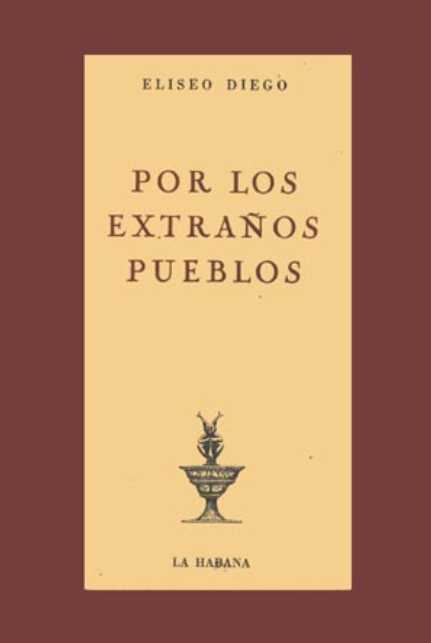4.1.2.7.2 The poetry collection “Por los extraños pueblos”, 1958, by Eliseo Diego (1920 – 1994)

In “Por los extraños pueblos” (Through Strange Peoples), from 1958, Eliseo Diego continued a similar poetic vein to the one he had begun with his essential collection of poems, “En la Calzada de Jesús del Monte” (On the Causeway of Jesús del Monte); this work brings together many of the Origenist quests regarding the national that he had maintained after the revelation of his first notebook, and its significance for the era of republican literature and Latin American poetic expression is already established.
In this collection of poems, we see an even more marked attempt to capture the essence of the homeland, not through picturesque perspectives but rather through historical exploration and an ever-deeper exploration of the facets of the surrounding reality, both what is typical from a natural and geographical perspective, as well as the interweaving of experiences and the social consciousness of one of the most vertiginous times.
From the perspective of poetic form, a refinement of traditional Castilian structures is evident here, especially in the cultivation of the décima and the sonnet, in an effort to create verses of closed and sufficient lyricism. However, other pieces go beyond this concept and display a certain exuberance, also anchored in the typically Creole language and contexts, or even with a more marked Cuban quality.
The tone of the collection of poems differs somewhat from the preceding text in that its investigation is no longer agonizing but has nuances of joy, which is that of an advent almost predicted from poetic knowledge, where memory turns toward the future and toward the understanding of a reality that is already, extracting the words from the fictions of Virgilio Piñera, “at its point of maximum saturation.”
In the book’s prologue, Eliseo Diego states: “It is not by chance that we are born in one place and not another, but to bear witness. I have paid as close attention as I could to what God gave me as an inheritance; to the colors and shades of my homeland; to the customs of its families; to the way things are said; and to the things themselves—sometimes obscure and sometimes light.”
As can be seen from this approach, the religious and the national interweave their fabric here, embodied in a poetic proposal of unique quality. The poverty and helplessness of reality are conjured in these verses through a ceaseless search for what shines within the persistent emptiness of reality. It is here that the poet immerses himself in a dialogue with his cherished souls and affirms, “For who ever saw the things I love?”








